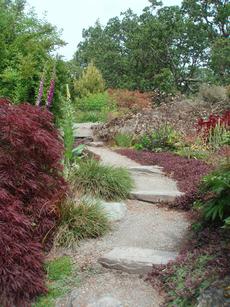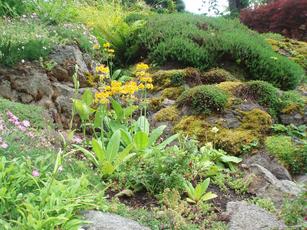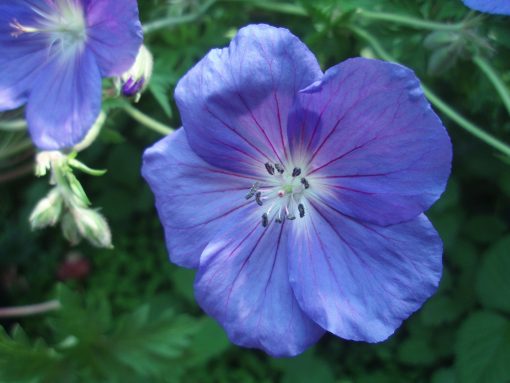
On my daily walk near the Boulder Creek Golf Course I see my neighbor has planted their partly shady bank with blue hardy geraniums. Already starting to bloom this large swath of color is going to be breathtaking very soon. True geraniums are becoming more popular. They are the work horses of the perennial border – hardy, versatile, long blooming plants for edgings, borders and ground covers.
Most people use the common name geranium to describe what is actually a pelargonium. Ivy geraniums, Martha Washington pelargoniums and zonal geraniums are all pelargoniums. Hardy geraniums, also called cranesbill, look very different. Leaves are roundish or kidney-shaped and usually lobed or deeply cut. Flower colors include beautiful blue, purple, magenta, pink or white and often completely cover the plant with color. I’ll bet if you visited a garden on a tour or admired a picture in a garden magazine it contained true geraniums. Here are just a few strong performers available among the dozens of species.
Blue flowers in the garden are always a hit as they combine so well with other colors. Geranium Orion’s abundant clear blue flower clusters bloom over a long season. Use this 2 foot spreading plant in sun or part shade in a mixed border or as a groundcover. There are other blue flowering geraniums. I use to grow geranium ‘Brookside’ in my own garden. It’s large bright blue flowers are larger than ‘Johnson’s Blue’. ‘Rozanne’ is another common favorite with stunning blue flowers.
Another fast growing variety is geranium incanum which covers itself spring through fall with rosy violet flowers. Cut back every 2-3 years to keep neat. This variety endures heat and drought better than other types but needs some summer water. It self sows profusely which might be exactly what you want as a groundcover in a problem area.
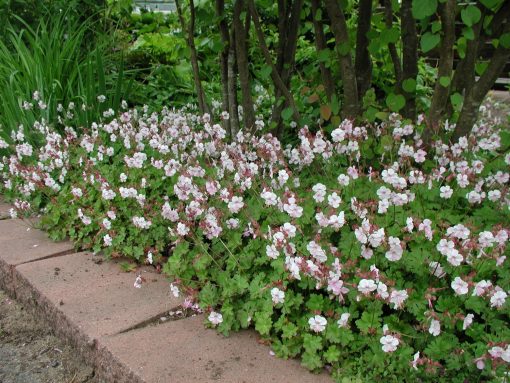
If pale pink is your color, plant geranium x cantabrigiense ’Biokova’. This excellent groundcover spreads slowly. The numerous one inch flowers are long lasting and cover the plant from late spring to early summer. Their soft pink color is indispensable when tying together stronger colors in the border and the lacy foliage is slightly scented.

Another geranium in the same family is ‘Karmina’. I’ve been using this deep rose flowering variety for several years in designs in areas that receive moderate irrigation. With lush green leaves on a low spreading plant it’s pretty even when not in bloom.
There are a couple other varieties that are popular and deserve a try. They are Award Winning Mavis Simpson’ and Russell Pritchard’. Both have bright pink or purple flowers and make good additions to your perennials.
Geranium maderense grows best in shade. This dramatic native of Madeira is the largest geranium with huge 1-2 foot long leaves shaped like giant snowflakes. Clusters of thousands of rose tinted flowers form on a 3 foot trunk. This perennial is short-lived but self sows freely. Add some of these architectural plants to your border for color and structure.
Give a hardy geranium a place in your garden.

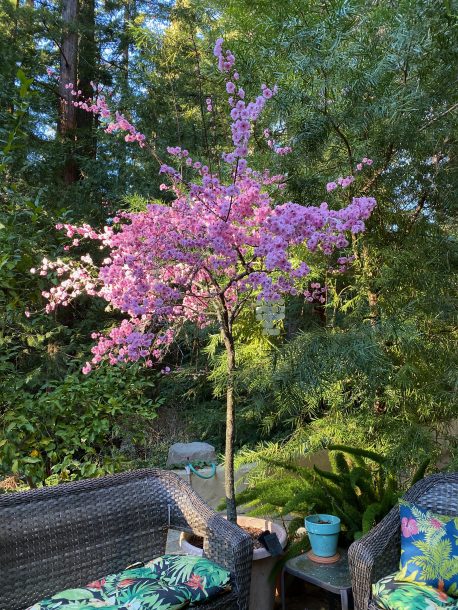

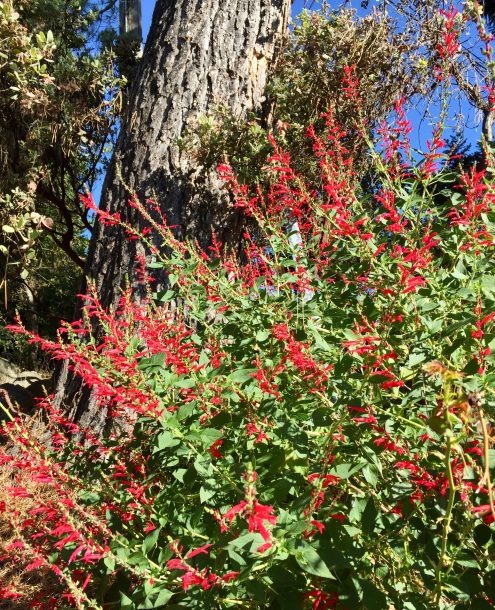
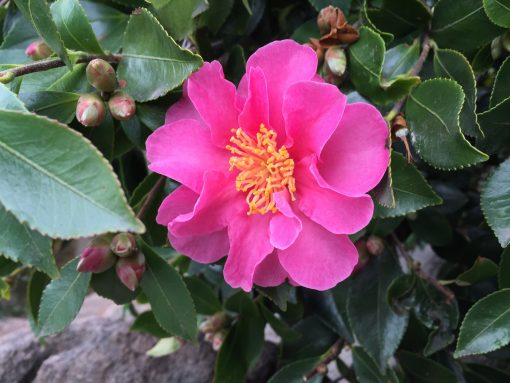
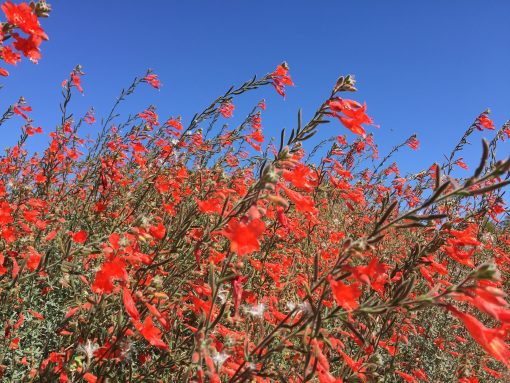
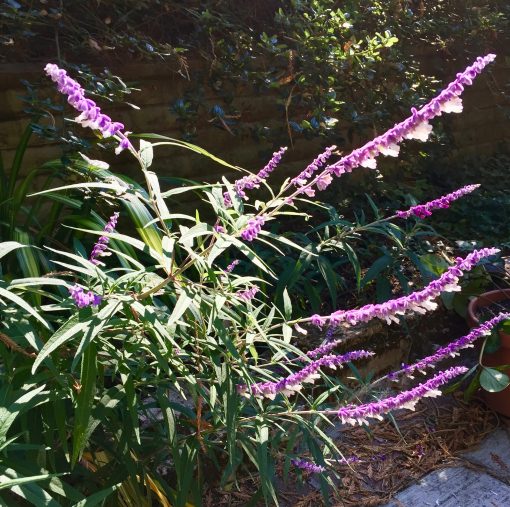
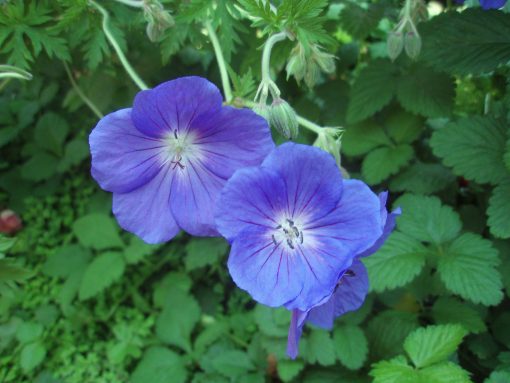
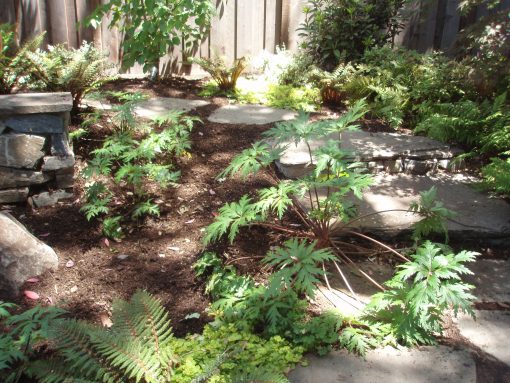
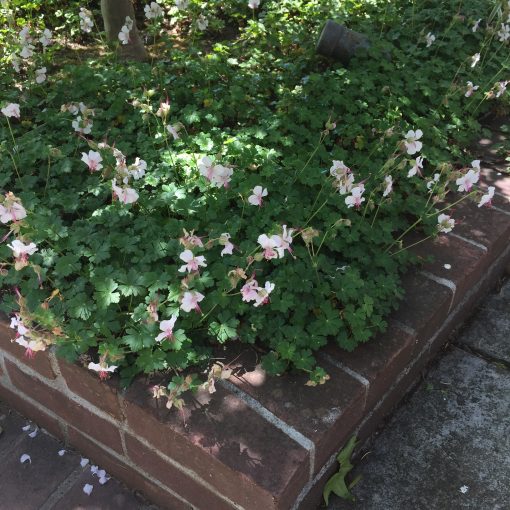
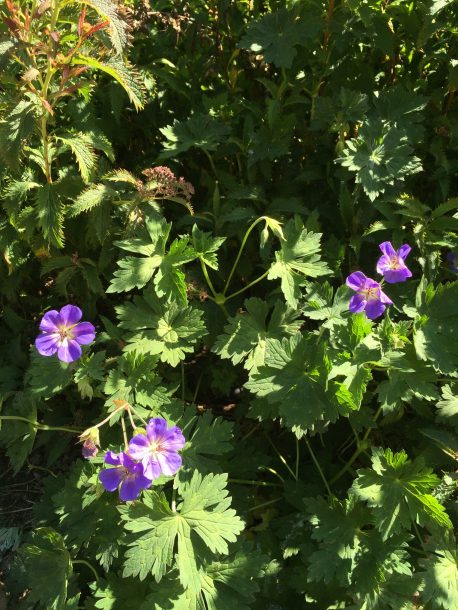
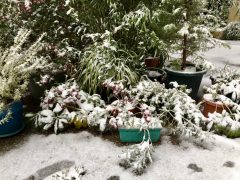
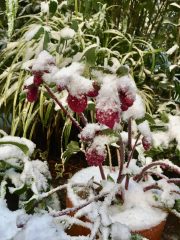 After the snow melted I have to say the hellebore help up perfectly. I received a couple new ones last year for my birthday. Wish I had saved the tags. The double burgundy one is lovely. One of my favorites is called Cinnamon Snow but all of the varieties of this buttercup relative accept wind, rain, cold and less than perfect soil while getting by with only moderate watering in the shady summer garden. Deer aren?t attracted to them either
After the snow melted I have to say the hellebore help up perfectly. I received a couple new ones last year for my birthday. Wish I had saved the tags. The double burgundy one is lovely. One of my favorites is called Cinnamon Snow but all of the varieties of this buttercup relative accept wind, rain, cold and less than perfect soil while getting by with only moderate watering in the shady summer garden. Deer aren?t attracted to them either settle in before setting flowers but beginning last year it?s making up for lost time. There?s something special about a plant that will bloom in the depth of winter, hold up to rain and scent the garden all at the same time. With beautiful rosy-pink flower clusters and attractive yellow-margined variegated foliage, daphne make a great foundation plant for dappled shade gardens. They are deer resistant and have low water requirements during the summer. What?s not to love?
settle in before setting flowers but beginning last year it?s making up for lost time. There?s something special about a plant that will bloom in the depth of winter, hold up to rain and scent the garden all at the same time. With beautiful rosy-pink flower clusters and attractive yellow-margined variegated foliage, daphne make a great foundation plant for dappled shade gardens. They are deer resistant and have low water requirements during the summer. What?s not to love?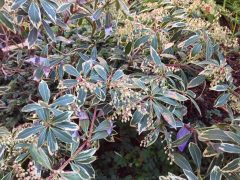 ley shrub (Pieris japonica). There are many varieties of this early winter bloomer. Some have pure white flowers, other sport various shades of pink or dark rose. Mine is the smaller variegated foliage model with dainty, drooping clusters of pure white flowers in early spring. Right now it is covered with flower buds so dense that you?d think it was already blooming. The new growth in the spring has a beautiful pink tint. This shrub will hold up to the wildest weather. Another plus for the Lily-of-the-Valley shrub is that is useful for firescaping in the landscape and it isn?t on the menu for deer either.
ley shrub (Pieris japonica). There are many varieties of this early winter bloomer. Some have pure white flowers, other sport various shades of pink or dark rose. Mine is the smaller variegated foliage model with dainty, drooping clusters of pure white flowers in early spring. Right now it is covered with flower buds so dense that you?d think it was already blooming. The new growth in the spring has a beautiful pink tint. This shrub will hold up to the wildest weather. Another plus for the Lily-of-the-Valley shrub is that is useful for firescaping in the landscape and it isn?t on the menu for deer either.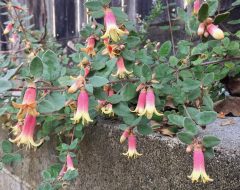 variegated variety called Correa ?Wyn?s Wonder? to my own garden a couple years ago but I was cavalier about protecting it from gophers and alas it is not with me anymore. Still it?s a great plant. Although not related to hybrid fuchsias, the flowers are similar and their nectar feed the Anna?s hummingbirds when there?s not a lot of plants blooming for them. Australian fuchsia grow well in dry shade under oaks are deer resistant and drought tolerant.
variegated variety called Correa ?Wyn?s Wonder? to my own garden a couple years ago but I was cavalier about protecting it from gophers and alas it is not with me anymore. Still it?s a great plant. Although not related to hybrid fuchsias, the flowers are similar and their nectar feed the Anna?s hummingbirds when there?s not a lot of plants blooming for them. Australian fuchsia grow well in dry shade under oaks are deer resistant and drought tolerant.